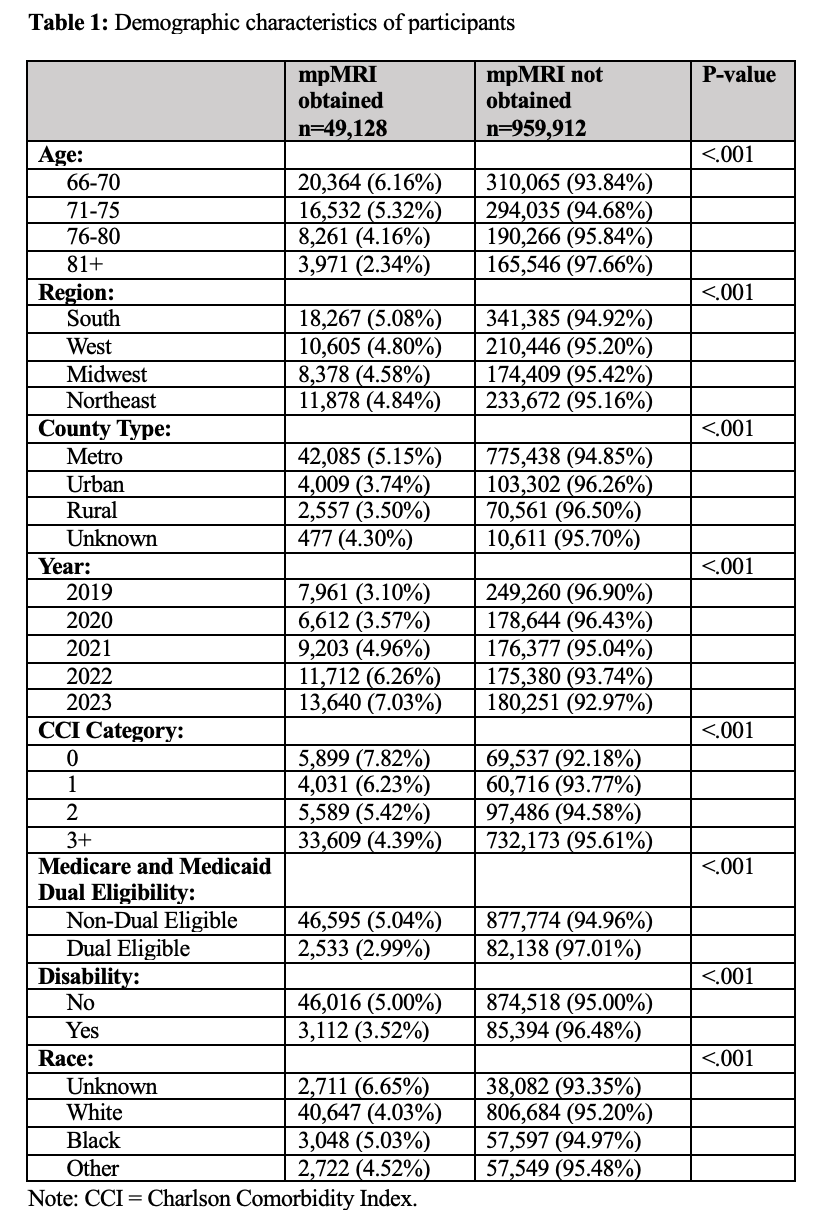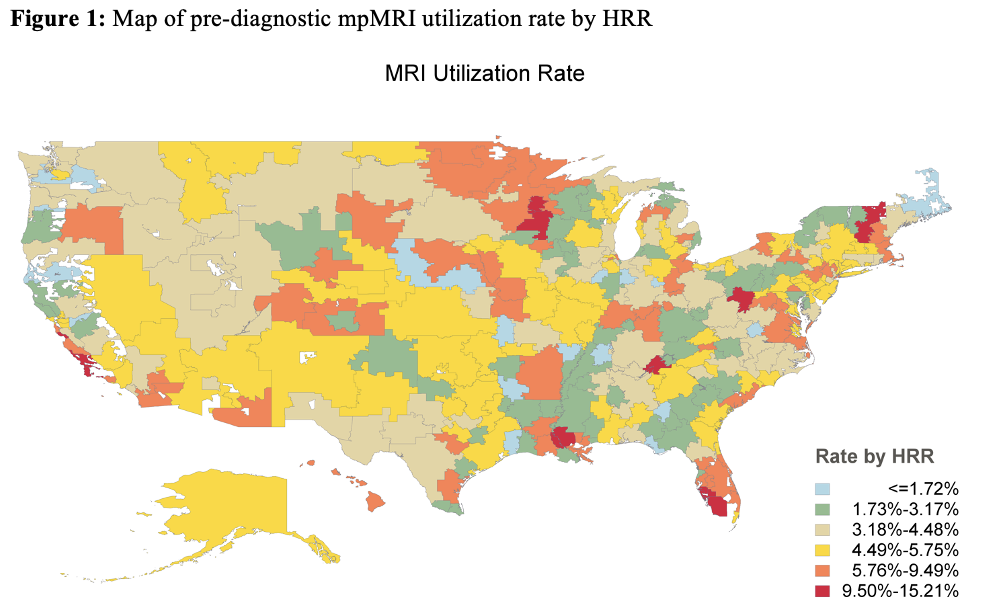Back to 2025 Abstracts
Rural-Urban Disparities in Access to Multiparametric MRI for the Workup of Elevated PSA in the United States from 2019-2023: A Medicare Claims Analysis
Nathaniel Fox Hansen, MD, MPH1, Hanna Zurl, MD
2, Stephan Korn, MD
2, Jianyi Zhang, PhD, MS
2, Caroline Moore, MD
3, Quoc-Dien Trinh, MD
4, Alexander Cole, MD
1.
1Brigham and Women's Hospital, Boston, MA, USA,
2Center for Surgery and Public Health, Boston, MA, USA,
3University College London, London, United Kingdom,
4University of Pittsburgh, Pittsburgh, PA, USA.
BACKGROUND: The utility of multiparametric magnetic resonance imaging (mpMRI) in the workup of elevated PSA is well established. Although rural patients face many barriers to prostate cancer care, it is not known whether they also face barriers in accessing pre-diagnostic MRI for prostate cancer. Here, we aim to identify disparities in mpMRI use for men with elevated PSA in urban and rural communities.
METHODS: We used Medicare claims data from 2019 to 2023. Our study included men over the age of 65 with elevated PSA in pre-diagnostic testing. Sociodemographic characteristics were collected including residence in “metro”, “urban”, and “rural” counties as defined by standardized rural-urban continuum codes. A multivariate logistic regression analysis clustered by hospital referral region (HRR) was performed to test the association between degree of rurality and receipt of mpMRI.
RESULTS: Amongst the 1,009,040 beneficiaries with elevated PSA, 4.87% (n=49,128) obtained a mpMRI. Beneficiaries living in the highest population density “metro” centers were more likely to receive a mpMRI as compared to “urban” or “rural” communities (5.15% vs 3.74% vs 3.50%, respectively). In our adjusted multivariate logistic regression model clustered for hospital referral region (HRR), there was 33% lower odds of receiving mpMRI testing among “rural” communities compared to “metro” communities (adjusted OR 0.668; 95% CI 0.600-0.743).
CONCLUSIONS: Rural patients are less likely to receive mpMRI for prostate cancer. Barriers such as lack of access to MRI scanners may represent unique challenges for rural patients which will require targeted policy strategies to address.


Back to 2025 Abstracts

